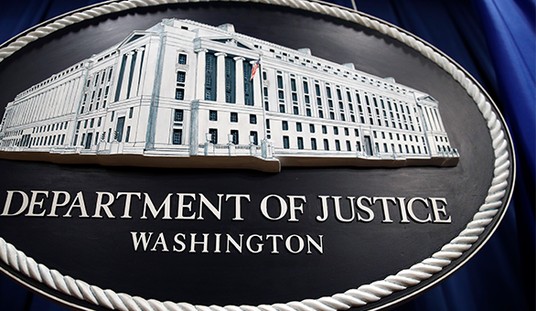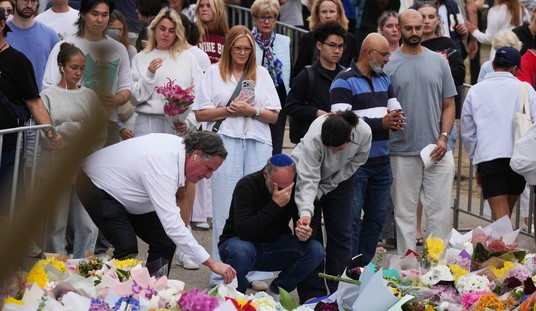On occasion, we have guest posters at Bearing Arms. Today’s guest is Frankie McRae the owner of Raidon Tactics, a firearms training company in central North Carolina.
Frank McRae is the former head of the US Army Special Forces Advanced Reconnaissance Target Analysis and Exploitation Techniques Course (SFARTAETC) at Ft. Bragg N.C. He started his military career in the 1st Ranger Bn as an 11B infantryman. He served in the 1st Special Forces Group (ABN) Okinawa Japan, in Cco 1st Bn. 1st SFG(A) (C-1-1) where he was an assault team leader for F team,Troop 1 in the Combatant Commanders In-extremis Force (CIF) conducting operations in Operation Enduring Freedom, advising, training and standing up the Light Reaction Company of the Armed Forces of the Philippines (AFP). He was then assigned as an Instructor to the SFARTAETC at the Special Warfare Center and School in Ft. Bragg NC, was promoted and became the NCOIC of the course and awarded for having the highest graduation rate for the course in its twenty year history. He also served as a Troop SGM Troop 1 and Team SGT ODA-354 in B co 2nd Bn 3rd SFG(A) CIF in IRAQ as an Iraqi Counter-Terrorism Force (ICTF) Company SGM advisor and combat leader on many missions in Iraq and also attended the Israeli Counter-Terrorism Course as an exchange instructor.

Establishing The Combat Marksmanship Mindset
Combat Marksmanship (CMMS) is the ability to place lethal precision fire on a threat target in all environments under the stress of combat in order to reduce a threat to a point that it is no longer viable. CMMS differs from Marksmanship (MMS) fundamentals, in a way that, the enemy is firing at you or was just firing at you. In marksmanship shooting events, the shooter has all the time to make a shot count. In CMMS, the shooter has limited time, literally the rest of his life to perceive a threat and then eliminate that threat. When a UFC fighter goes into the octagon, they call it combat. However, is it really? He cannot bite, head butt, or gouge the opponent’s eyes. It is nothing more than a very painful athletic event. The UFC fighter has the ability to say, “I quit” or tap out. In combat, the face off of opponents to the death, you do not have the ability to quit. If you quit it is very likely that you or someone else will die.
CMMS begins with a mindset that the shooter is going into a combat situation. When a boxer enters the ring, he expects to be hit. When a person has taken on the responsibility to protect himself or others, he has to assume that once the fight is on, it is to be to the end. It may end peacefully. Posturing may actually work. Studies show that a gun presented by a victim actually keeps the assailant at bay or runs him away. The mental decision of the “victim” to refuse to be a victim was the first action completed to save his life. That decision was made as soon as that person decided to arm himself. The correct mindset for the “Combat” situation starts with preparedness.
Preparedness
Preparedness is the situational awareness that something may happen and “prepares” the mind by thinking out the “what ifs”. “If this happens, I will do this……..”. This little saying is one of the best thoughts to have before something actually happens. Human reaction times to a stimulus are as fast as .25 seconds. These reaction times are achieved when a person can think thru the actions needed to accomplish a task before it is needed. This is a mental rehearsal. My collegiate wrestling coach was a big advocate of the “mental rehearsal”. Before matches, I would lie in bed the night before and mentally picture the match in my head. I would visualize the actions I was going to do first and think to myself “if this or that happens, then I will do this…..” I wrestled the match virtually many times before I wrestled it actually. Now, I am a much better shooter than I was a collegiate wrestler, but I learned a lot from those simple mental exercises. These prepared me for many situations in life. Preparedness also influences determination and the ability to be proactive.
Determination
Determination is the next principle of the mindset for combat. It is the innate personal decision to “not quit” until the situation is over. By being mentally prepared, the shooter is not as surprised at the situation and therefore not as overcome by events as someone that has no idea about what is going on. Because a person can think ahead in the gunfight, he can then realize the outcome and be proactive, not reactive. By being determined and proactive, the gunfighter has a diminished fear factor. I am not saying that there is no fear in the gunfight. There is fear, fear of others getting injured or dying and other types of fear. Maybe fear of the bad guy getting away. However, determination, the mental attitude that “I WILL NOT QUIT” carries us thru to the end of the fight. Determination gives us passion and passion can be the driving force that gets us out of bed on Saturday mornings and takes us to the range.

Passion
Passion is the love that we have for activities we do. Going to the range and training for tasks that are uncomfortable or hard to accomplish. However, once we accomplish those tasks we feel gratification and satisfaction. That passion breeds more determination to excel and make ourselves better and push ourselves harder. We just have to remember, too much “can do” sometimes can do us in. We need restraint at the right time in the training cycle. We must be able to control the passion and use the smoothness we develop in our actions to develop the mental speed needed to anticipate what happens next.
Speed
Speed, both mental and physical comes by training actions repetitively. By repeating the same actions correctly many times, we “groove” that action in our brain. Once that motion is “grooved”, the action can become almost reflexive. There is no such thing as “muscle memory” per say. It is a term used to explain the reflexive actions of trained tasks that can happen with minimal outside influences. A reflex by definition is a response to a stimulus that does not need to go to the brain and be processed. It goes to the spinal column and back to the point of origin. Training increases speed. Training gives us the experience to know what should be happening next in the sequence of events. Passion drives us to train and determination keeps us going when it gets difficult. By focusing that passion and determination, we can “push thru” to the next level of accomplishment and our speed increases. With focused power and speed, we accomplish violence of action.
Violence of Action
Violence of Action is the execution of actions with surprisingly overwhelming force. It is a culmination of all the passion, determination and speed needed to realize victory. When faced with violence of action the assailant must reevaluate the situation. Violence of action also diminishes the bravado of the assailant and increases the bravery of the gunfighter. Violence of action is the one aspect that criminals use to surprise victims and totally dominate the situation. By dominating the situation, they control the victim. The gunfighter must use all the aspects of the COMBAT mindset to be the one that dominates the situation, eliminate any threats with the appropriate level of force and be prepared to go to that level of force. Thereby controlling the situation and being victorious.
The Combat Mindset is not a natural born ability for most people. It is and can be a learned response. In preparing oneself for the fight, the combat mindset must be mastered. You must have determination to go the distance, passion to work hard and the mental preparedness to be aware of the situation.
Frankie McRae is the Director of Training for Raidon Tactics Inc.
He is the former head of the US Army Special Forces Course that is the proponent for Hostage Rescue/Counter-Terrorism training and operations. Raidon Tactics Inc. is a service disabled veteran company that offers premiere Shooting, Close Quarters Battle and Counter-Terrorism driver training. These course are offered to Military, Law Enforcement, Corporate Security firms and the general public.








Join the conversation as a VIP Member